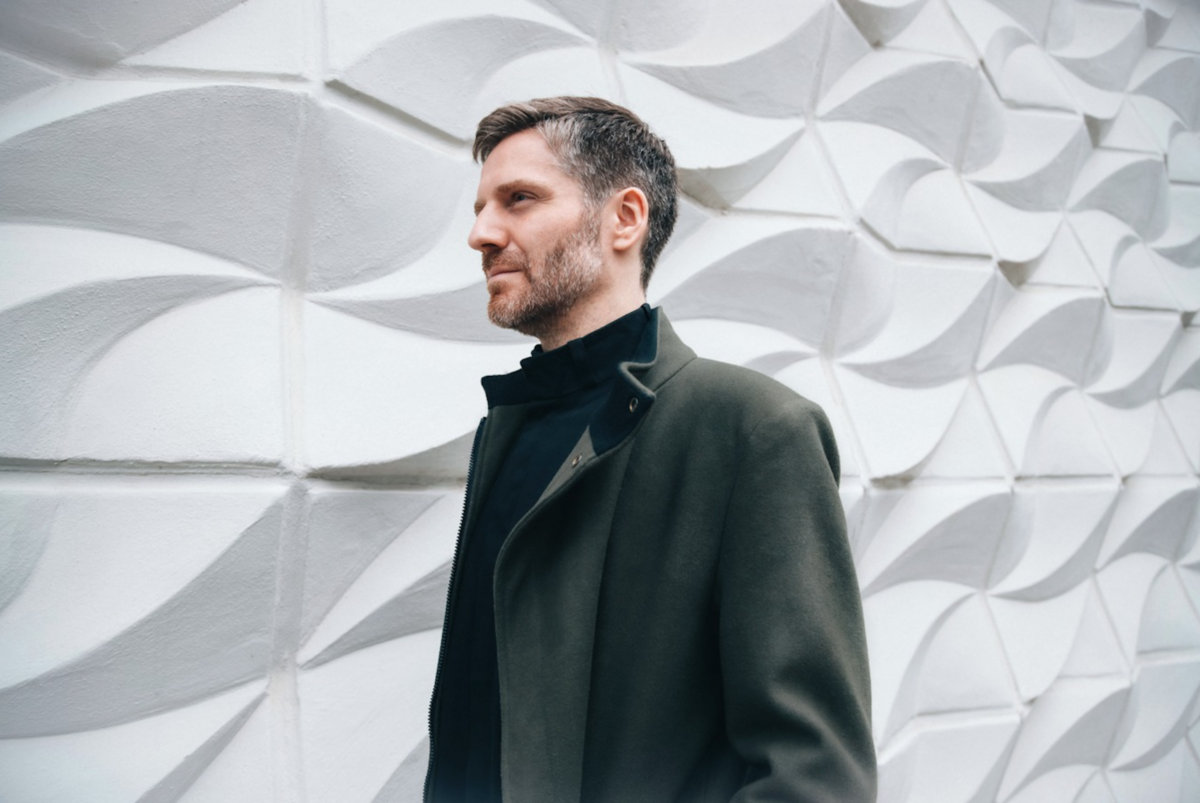YOU KNOW that if no less a renaissance man than Max Cooper is taking enough of an interest in what you’re sculpting in sound to sign you up for his label, Mesh, then you must be doing something not only very right, but also very interesting; Max really these days being at the forefront of putting the I in IDM, with his multimedia collaborations with the McGloughlin brothers, in the world of dance, and beyond.
You can also bet your bottom dollar that we, lovers of the music, need to prick up our ears, pay some rapt attention, too.
Such is the case with Gareth Williams, the sound investigator who as Llyr is set to release his debut album, Biome, for Mesh later in the summer.
You may have been lucky enough to experience Llyr’s work with 3D sound at Max Cooper’s Barbican shows back in September 2019, which were right out on the advancing edges of how sound can be; on that occasion he threaded together environment recordings from the capital with answerphone messages and presented them in jaw-dropping, whirlwinding precision and aural definition.
He’s just dropped the video for “Winged Chamber Music” which premiered aurally on Mary Anne Hobbs’ show on 6 Music in early May and caused a splash, quite literally, as a sphere of ecosystem-sourced retro ambient cycled and swirled over the radio, the sound sources here dripping cave water and the chitchat and sonar of bats pitched down into human range; there’s a Philip Glass formalism, a Berlin attention to texture and lusciousness, an absolute majesty to this reshaping.
Monolake as a carving of the Green Man, centuries old, over-vined and sunbleached, cracked and potent. Look, there’s no other way to put this: pretty fucking mind-blowing. Exhilarating, transcendent. A cast-iron genuine thrill in sound. Actually, one of the most astonishing electronic music experiences I’ve had in years.
Gareth says of the track and its genesis: “I was mesmerised by the sheer scale and majesty of the cave I visited in Sarawak, Borneo. These underground cathedrals are among the most challenging environments for life to prevail [in] because there is little to no light energy and a dearth of nutrients.
“The creatures that live in these places are uniquely adapted to survive in these conditions and work in concert with each other as part of a very delicate ecosystem which could easily be disrupted. Any interference could cause a deep, difficult-to-predict, cascading impact on this fragile non-human environment.
“This particular cave was home to many roosting bats who would leave the cave at night to feed and, in turn, provide nutrients to those creatures that never leave the dark. I wanted to capture the beauty of this cavernous space, but also express the delicate balance that life experiences there.
“Naturally, the bats play a starring role. Everything you hear is synthesised entirely from audio recordings I captured inside the cave. Binaural recordings of water droplets in a dark, quiet part of the cave provide the ambience and the source for the granular textures. All melodic elements are created from individual pitched raindrops which I selected from these recordings, later diffusing into expansive choral drones.
“I recorded the chattering bats at high sampling resolution so that I could pitch them down many octaves for us to hear how they sound. Even the low impacts and bass are made from cycles from the bat recordings; the ultrasonic becoming subsonic. The final piece represents an auditory journey through this cave, exploring themes of space, beauty and fragility.”
The concept, the process, the application, the sheer engineering of this; anyone else feeling awed and a little bit, well, dim, right now?
Biome is split into two sections, corresponding to sides: the Pre-Anthropocene and the Anthropocene. The first is composed (and composed, here, in both senses) of field recordings made by Gareth in our rainforests; you’ll hear bird song, monkeys, the nuance of wood moving against wood as trees abrade in the wind. Nope: no drum machines, synths, sample banks; the world captured as is and then subtly (and sometimes massively and transportingly) layered and reworked on a sound-sculpting level, with granulation and editing, custom instrumentation forged from short fragments lifted and fashioned into mutable devices, evolved in harmony with the sonic (and real-world) environment. Again, really profoundly far out, boggling minds, including mine.
On the second section, the Anthropocene, there’s more of an overt technological threading, with electronica foregrounding in its own right; more complicated, more chaotic.
Gareth says: “The amazing thing about nature is that there is a perfect solution for everything. Each organism is highly specialised and has exactly the right characteristics to fill a gap.
“Writing music holds a similar challenge – how do we create and arrange a collection of sounds and musical ideas so that they make sense as a whole but where each individual element also has its own proper place? In this sense, nature is the ultimate composer.”
Biome then is intended as a focus on, a love letter to, an expression of, the precarity and beauty of our ecosystem. In that, Mesh is ideally placed as a host for such a musical examination – witness Max Cooper’s own brilliant Earth EP from last summer.
Think it’s great? Frankly, it is. Really, paradigm-shiftingly is. And the album? Well …
Llyr’s Biome will be released digitally and on vinyl by Mesh on July 29th, the vinyl being eco-recycled so that no two copies will be the same; you can pre-order yours now over at the label’s Bandcamp page.
Connect with Llyr online at his website and at Mesh.













No Comment